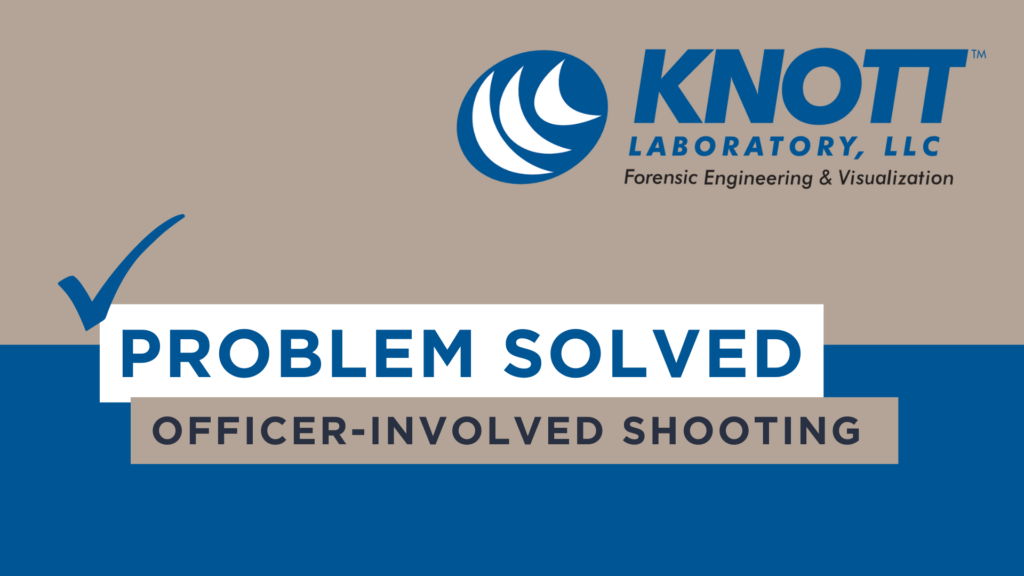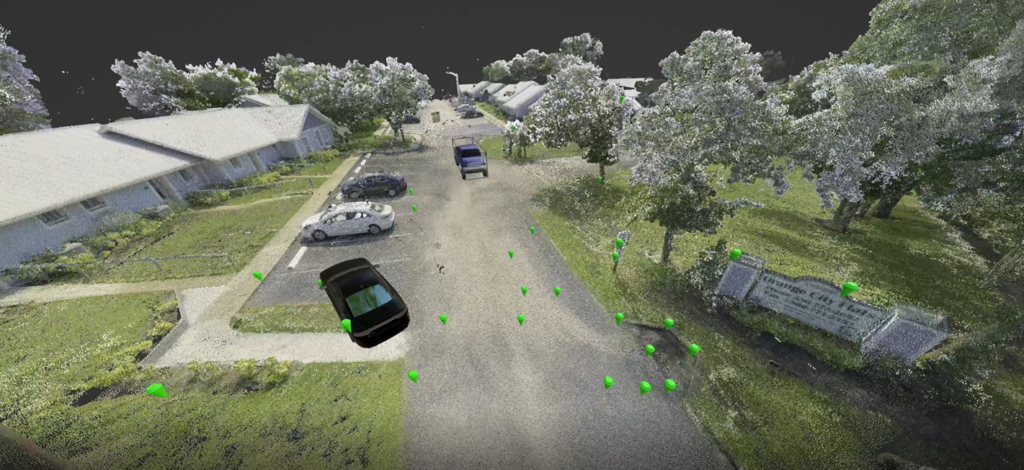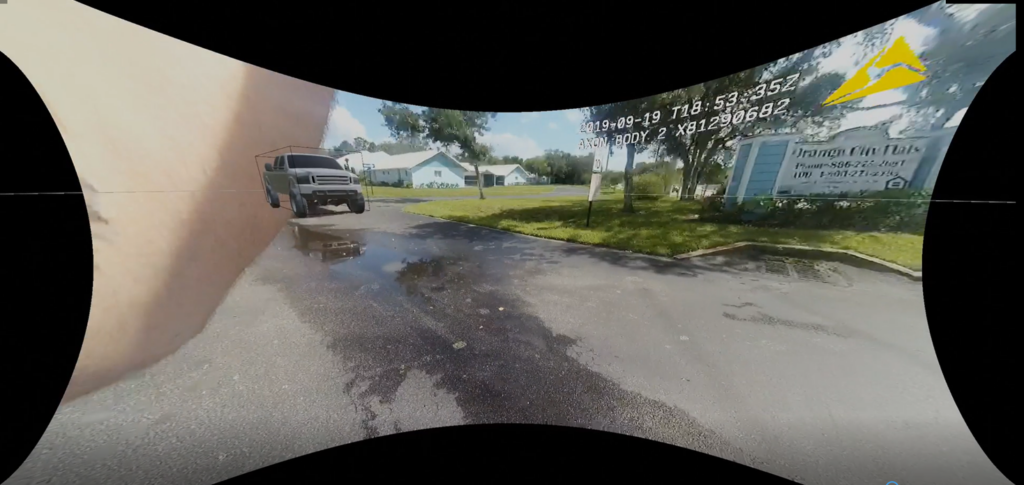
Knott Laboratory provides forensic engineering and animation, Civil & Structural, and Fire & Explosion Investigation services to reconstruct accidents.
Problem Solved: Officer Involved Shooting

Problem: The plaintiff and defendant have conflicting statements about the pivotal aspect in a case in which a police officer shot and injured the defendant.
The Background
Police tried to contact the driver of a stolen Ford pickup truck while in a parking lot. The driver fled from police through an apartment complex parking lot while being chased on foot by an officer. This officer fired his handgun into the passenger side of the moving vehicle, striking and injuring the passenger in the truck.
The passenger is the plaintiff in this case.
The defendant is the police officer who fired the weapon.
The officer alleged that the use of force was appropriate because the truck swerved toward the officer, and he was in fear for his life.
The Process
The Knott Laboratory Digital Media Forensics™ team began by reviewing all documents in the case, police body-worn camera footage, and helicopter footage. We then inspected and collected a laser scan of the entire scene. Laser scanners are powerful devices that gather millions of data points of a 3D space, creating a high-definition digital replica.

From there, the video footage is overlaid onto the laser scan through a process called camera-matching. This creates a scientifically accurate reconstruction of the scene from which analysis can be performed.

Answer: The Ford truck did not swerve toward the police officer at any time. In fact, the driver maneuvered the truck away from the officer by 2.82 feet.

The officer moved into the roadway and path of the truck and continued to move into that path after shooting at the truck.
- The truck started to swerve away from the officer 27.28 feet from his position and swerved 2.82 feet away.
- The officer was 17.4 feet away from the truck when he fired his handgun.
- The officer moved 2.21 feet further into the path of the truck after the truck swerved away.
- The officer moved an additional 4.58 feet into the truck’s path between firing the first and second shots.
- The officer was 6.53 feet from the truck when he fired his second shot.
Key Takeaway: The Digital Media Forensics™ process provides a solid foundation from which important questions can be answered.
Note: Knott Laboratory does not provide analysis or testimony on police policies or practices and whether the use of force was appropriate.

